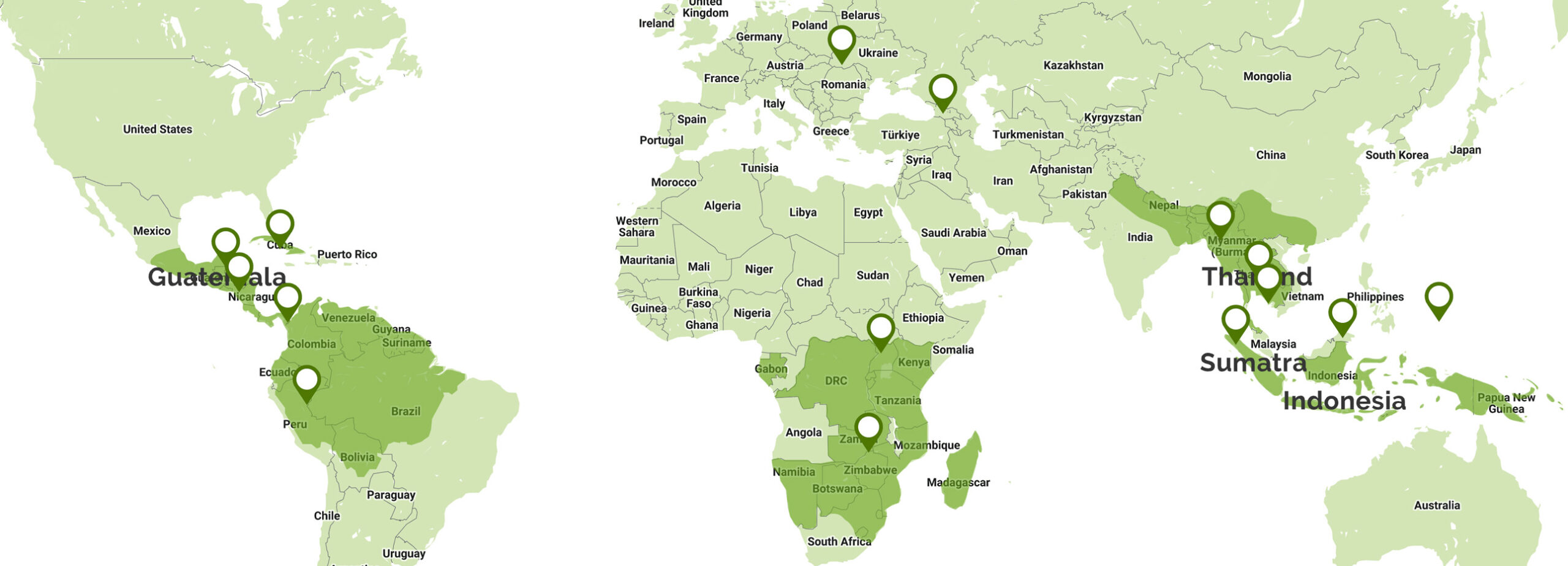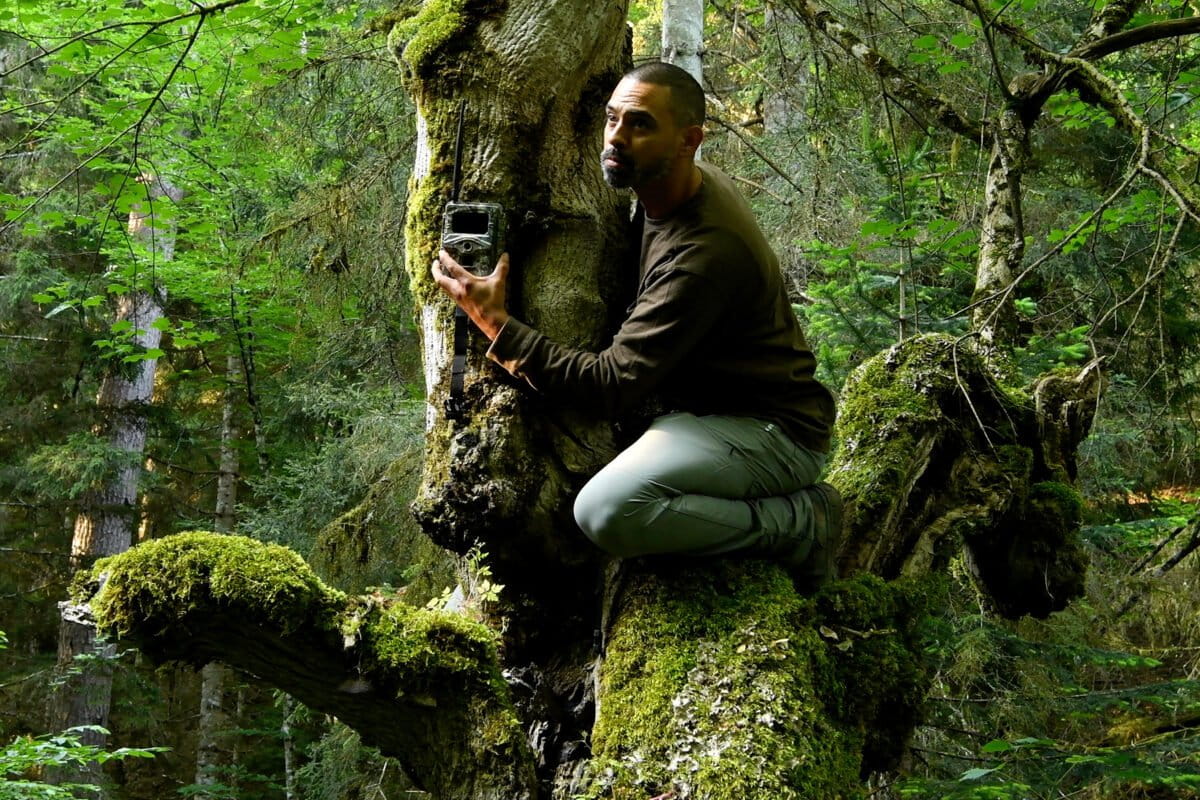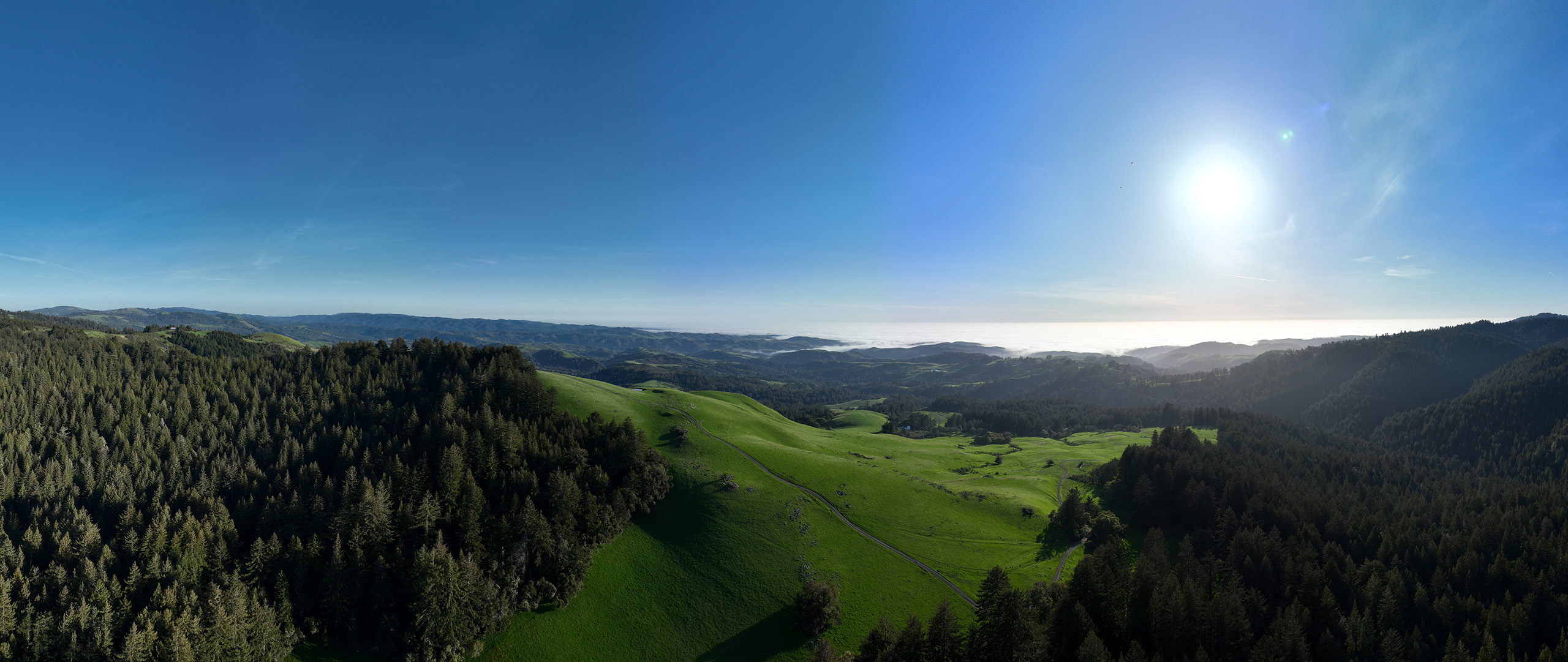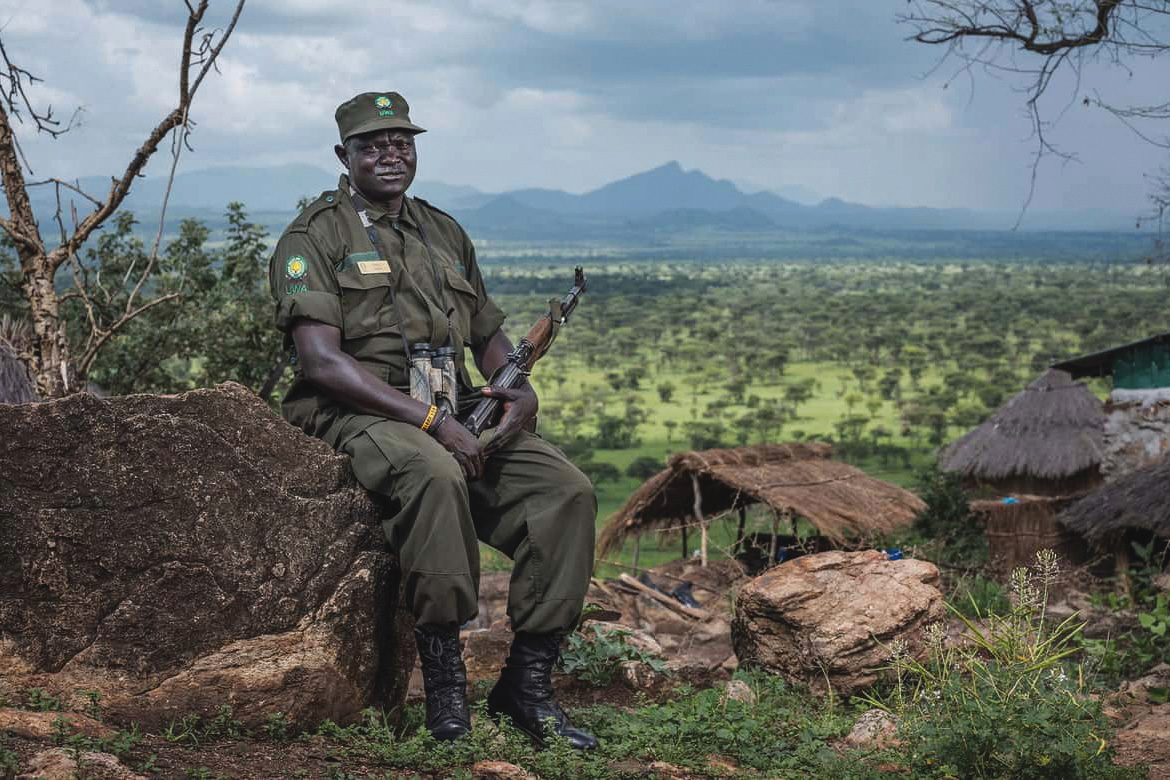- In December, world leaders adopted the Kunming-Montreal Global Biodiversity Framework, targeting the conservation of 30% of Earth by 2030.
- However, Jeff Morgan, founder of Global Conservation, points out that simply designating protected areas is not enough to safeguard nature. His organization, therefore, focuses on strengthening protection within UNESCO World Heritage Sites in lower and middle-income countries, utilizing cost-effective technologies for law enforcement against poaching, illegal logging, and more.
- Global Conservation currently operates across 22 national parks and 10 marine parks in 14 countries and aims to expand its work to 100 sites by 2033. Morgan believes that this focus on existing national parks and habitats is the most efficient and cost-effective way to achieve climate goals.
- Morgan recently spoke with Mongabay founder Rhett A. Butler about Global Conservation’s approach.
Last December, delegates from nearly 200 governments adopted the Kunming-Montreal Global Biodiversity Framework at the United Nations Biodiversity Conference (COP15) in Montreal, Canada. This agreement aims to conserve 30 percent of the earth by 2030 – a goal colloquially known as “30×30”.
But it’s one thing to set aside areas for conservation and another to actually protect habitat in a state that sustains the health of ecosystems and wildlife populations: Numerous studies have shown that formal protected areas often fail to effectively safeguard nature.
However, it’s one challenge to designate areas for conservation, and quite another to genuinely protect habitat in a way that maintains the vitality of ecosystems and wildlife populations. Many studies indicate that officially protected areas often fall short in effectively safeguarding nature.
Jeff Morgan, the founder of Global Conservation, identifies this as a significant shortcoming in the attempts to combat biodiversity loss and climate change. His California-based non-profit organization focuses on strengthening protection within a distinct segment: UNESCO World Heritage Sites in lower and middle-income countries.
“Global Conservation is the only nature conservation group who’s sole mission is the direct funding of park protection systems for saving our most important and endangered world heritage and national parks in developing countries,” the organization asserts.

Global Conservation strategically targets UNESCO World Heritage Sites because governments tend to prioritize them over other areas due to their prestigious U.N. designation and potential for tourism, explains Morgan.
“Clearly, simple designation of protected areas isn’t what is going to get us to 30×30; coverage does not guarantee biodiversity benefits,” Morgan told Mongabay. “But effective management — through strong enforcement — and with evidence for positive environmental outcomes does.”
Global Conservation’s approach involves working with local conservation authorities – be they government rangers or Indigenous community members – to manage protected areas and enforce laws against poaching, illegal logging, and other unlawful activities. The organization heavily relies on a range of cost-effective technologies, such as satellite imagery, cellular trail cameras, marine radars, and drones, to enhance protection. They term this suite of tools “Global Park Defense.”

Currently, Global Conservation is implementing this program across 22 national parks and 10 marine parks in 14 countries. The organization recently announced its ambition to extend its efforts to 100 sites by 2033, which, if realized, would equate to tens millions of acres of protected areas.
“By focusing on the GC100 – the most important and endangered national parks in developing countries for intact forest, marine and wildlife habitats – we can directly protect 250 million acres of intact forests – helping achieve nearly 1% of UN Climate Goals – similar to taking half a billion automobiles off the highways,” stated Morgan, referring to the Global Conservation 100 sites targeted by the organization’s new $50 Million Global Parks Fund. “Protecting our existing national parks, tropical forests and wildlife habitats is the effective and lowest cost way to achieve our climate goals needed to save humanity.”
Morgan talked about Global Conservation’s approach in a May 2023 conversation with Mongabay founder Rhett A. Butler.

AN INTERVIEW WITH JEFF MORGAN
Mongabay: What inspired your interest in nature and wildlife?
Jeff Morgan: My parents were both from the countryside and moved to Palo Alto because of its great parks – Windy Hill, Huddart Park, Año Nuevo and San Gregorio Beaches – all examples of our great conservation of nature in Northern California.
We see more wild turkey, deer, bobcats and mountain lions next to our house than 80% of the national parks I visit on Global Conservation missions. In many national parks the wildlife fear for their lives and rarely come to visit after decades of over hunting.

Most endangered national parks we won’t fund due to lack of wildlife – empty forests that will take decades to return even if we start now.
We strategically target intact forest and ecosystems with sufficient wildlife that is achievable to rebound if we protect the park through our Global Park Defense program. Global Conservation is seeking projects where we can increase overall predators and prey by 20% and 40% over ten years, respectively. Similar to requiring edge forests in logging areas, there needs to be enough wildlife left to restart populations.
Mongabay: You previously founded Global Heritage Fund (GHF). What led you to start Global Conservation?
Jeff Morgan: As Executive Director of GHF, I travelled to 60+ countries and saw the massive loss of national park lands, forests, marine ecosystems, and wildlife refuges in developing countries.
Over the past twenty years, we have lost millions of acres of intact tropical forests to cattle ranching, palm oil, soybean and corn, coca cultivation , and timber plantations, mining, urbanization, and other crops. Often, national parks are being cleared in developing countries without rule of law or proper enforcement.
I worked at GHF for 12 years in developing countries to preserve their UNESCO World Heritage cultural and archaeology sites which were often deep in the jungle like Mirador National Park (Maya civilization) or Bantaey Chamar Cambodia (Khmer civilization).

Often the story of nature’s destruction by man within 1-2 generations has led to the collapse of major civilizations. This ‘human destroys nature and later dies’ story is recurring and prominent throughout history. My hope is that our work with Global Conversation can reverse some of this damage to nature and biodiversity.
Mongabay: Global Conservation takes a unique approach to protecting nature and biodiversity in that it works exclusively in World Heritage sites. Why is this your strategy?
Jeff Morgan: We work on the Global Conservation 100 – the one hundred (100) most endangered and important national parks in developing countries. We don’t work in North America or Western Europe but do work in Eastern Europe: Ukraine, Georgia in the Caucuses, and a new project, Shar Mountains National Park in North Macedonia and Kosovo. We are focusing on enabling developing countries to protect their own national parks.
UNESCO World Heritage sites tend to get higher priority in government budgets due to their tourism potential. The designation itself – UNESCO World Heritage provides better guidelines for improved park management and monitoring.
How does Global Conservation’s approach relate to the 30×30 initiative?
Jeff Morgan: The critical value of Global Conservation is in contributing to effective conservation through improvements in enforcement. Without the model of Global Conservation and Global Park Defense, the world can’t successfully achieve 30×30 Protection in a meaningful way.
We need to work in each country to succeed in protecting one national park which can be a model for all the other parks they are creating, and one’s that just aren’t being protected.
In December 2022, at COP15, the new Kunming-Montreal Global Biodiversity Framework agreed on various 30×30 elements, most importantly including:
“Effective conservation and management of at least 30% of the world’s lands, inland waters, coastal areas and oceans, with emphasis on areas of particular importance for biodiversity and ecosystem functioning and services. The GBF prioritizes ecologically-representative, well-connected and equitably-governed systems of protected areas and other effective area-based conservation, recognizing indigenous and traditional territories and practices. Currently 17% and 10% of the world’s terrestrial and marine areas respectively are under Protection.”
Strong management locally is critical, but so is the measurement of the actual ecological outcomes of strong management and enforcement in order to truly claim effectiveness.
Clearly, simple designation of protected areas isn’t what is going to get us to 30×30; coverage does not guarantee biodiversity benefits. But effective management — through strong enforcement — and with evidence for positive environmental outcomes does.

A recent Nature Climate Change study found that the presence of wildlife is critical for healthy ecosystems and carbon sequestration. Their findings found that restoring the world’s wild animal populations can get us 95% of the way to the global target of extracting 500 gigatons tons of carbon from the atmosphere. There is a good write up on this in Mongabay and Bloomberg.
Mongabay: Global Conservation puts a heavy emphasis on technology. What technologies have you found to be the most useful in the field?
Jeff Morgan: There are a number of critical consumer technologies we use. Most national parks have no budget for military gear, and we must focus on low-cost consumer solutions for communications, surveillance, satellite monitoring, etc.
Cellular trailcams, marine radars and drones are critical for real-time 24/7 protection of endangered national parks. Recently, a drone monitoring a marine protected area led to 33 people being held and a number of them prosecuted in a single day.
Without trailcams, marine radars and drones most national parks have no idea how many illegal actors are entering and actively destroying the park with snares, illegal logging, hunting, and clearing and burning park lands.

Cattle, sheep and goats by the thousands are still being driven into national parks and destroying sensitive biodiversity and making soils and waterways sterile. Cattle and hunting should be outside national parks, period. MPAs should have large ‘no take’ zones and eliminate industrial and tourism fishing. This alone could solve many of the threats we face in developing countries, and make enforcement Black or White – much easier – you are inside the National Park or Not.
On water, we are bullish on marine radars to provide real-time 24/7 surveillance of coastal and island Marine Protected Areas (MPAs). Nearly every sports fishing or industrial fishing boat in the world has a radar and likely AIS, and every MPA should also have a marine radar and AIS receiver tracking all vessels. They are inexpensive and a proven consumer solution – millions of boats have a marine radar today driving down the price to be affordable for all MPAs – for example, it’s $12,999 for medium power radar with a five-mile radius.
Mongabay: And what technologies haven’t lived up to the hype? Why?
Jeff Morgan: Where we work, drones have not yet been proven effective for support of anti-poaching teams or finding poachers at night, for example, but are great for identifying illegal logging camps deep in the forest.
Cellular trailcams are ideal when there is good cellular coverage. Most national parks have little or no cellular service so there is a huge need for satellite trailcams to combat wildlife poaching and illegal logging in our national parks.

Anti-Poaching trailcam requirements for real-time surveillance are quite different than wildlife cameras, for example, which have no transmission capability. We use real-time Cellular trailcams mounted up in trees 12 feet or more so they cannot be easily seen. wildlife cameras, on the other hand, are usually mounted just three feet off the ground, and would quickly be stolen or vandalized in most Global Conservation project areas.
While technology and systems are all well and good, without the full support of the communities, Indigenous Peoples, farmers and ranchers, local villages and towns around the national parks, real long-term protection is not possible.
Mongabay: In the past five years there has been a significant shift in conservation toward greater emphasis on the roles Indigenous Peoples and local communities play in achieving conservation outcomes. This trend is arguably at odds with the top-down approach traditionally embraced by park authorities in many places. How is Global Conservation navigating these developments?
Jeff Morgan: Indigenous and community protection is critical to our mission.
We have five Indigenous-led Global Conservation Projects where government authorities are largely non-existent and Global Conservation and the Indigenous Authorities work directly together for territory protection.

In Panama, after 20 years of legal battles the Naso People were finally given titles to their lands. Now, with Global Conservation support, 60+ Naso Community Ecoguards have been equipped, trained, and patrol operations supported to protect their 300,000+ acres of native-titled lands. Neighboring La Amistad National Park, on the other hand, has only four rangers [Editor’s note: park staff employed by the government] covering over two million acres. In many cases, Indigenous Peoples have more people ready to protect their lands than the government’s park authority.
We need to work hard and effectively to protect both Indigenous Territories and government-backed national parks and marine reserves.
In order to protect endangered national parks, their gateways and buffer zones, we work closely with local communities and Indigenous leaders to collaboratively plan for biodiversity conservation and sustainable land use.
By balancing the needs of the people with the needs of the national parks, its forests, rivers, coastal oceans and wildlife, true community protection can be possible.

We work on the basis of three key values we hold dear – respect, trust and equity.
In Sierra del Divisor National Park in Peru, only 12 rangers cover five million acres across multiple provinces. Over the past five years, we have built strong protection force with local Indigenous peoples based on respect, trust and equity. Now multiple Indigenous protection teams have over 50 Community Ecoguards equipped and trained to patrol 5,000 kilometers a year. This is a great success in protecting the Peruvian Amazon.
Mongabay: Is there a particular project or initiative that best exemplifies what Global Conservation is trying to achieve?
Jeff Morgan: As many governments have not been able to protect their national parks from illegal logging, especially in poorer countries, we have invested heavily in our first five years in middle-income countries like Republic of Georgia, Ukraine, Thailand and Mexico.
In Thailand’s Thap Lan National Park, Global Conservation funded WCS Thailand to assist the deployment of Global Park Defense to stop illegal logging of Siamese rosewood, which we decimating the last stands of these critically endangered trees. Southeast Asia has lost much of its teak, mahogany and other hardwoods, with the prized rosewood now mostly limited to national parks.

Over five years, we enabled 90% patrol coverage and deployed hundreds of cellular Trailcams to see illegal loggers coming into the national park leading to arrests of over 1,200 loggers. After five years, few illegal loggers are returning to the national park and the government of Thailand is replicating Global Park Defense model across all its national parks purchasing over 2,000 cellular Trailcams.
Mongabay: The Global Conservation web site lists visitor numbers as a metric for various protected areas. Do you see tourism as a key aspect in the long-term financial sustainability of the parks in which you operate and support?
Jeff Morgan: Tourism to UNESCO World Heritage sites is one of our foundation strategies for long-term financial sustainability of park and wildlife protection. Without visitors, communities are left on the edges of the parks with few livelihoods other than wildlife poaching and illegal logging. By focusing on potential for Community-led Tourism as a core selection criterion for GC Projects we undertake, we have a higher chance of success in financial viability for long-term protection.
Mongabay: What are other interventions or mechanisms that you’re hopeful about when it comes to financing parks?
Jeff Morgan: Global Conservation is leading a new Global Parks Fund, which will invest $500,000 to $1 million over five years into protecting each of the largest intact forests and wildlife habitats in the world. Upon Global Conservation project inception, we require signed contracts that the government will increase base park protection funding to continue the program for at least ten years. Over the life of an endangered national park, this will increase overall funding for park protection by 4-5 times.

A typical one million acres national park like Darien in Panama or Mirador in Guatemala sees less than $100,000 a year in total budget, operating with 10-12 rangers at the most. Global Parks Fund nearly triples this funding and secures government commitment to support the new level in years 6-10.
Our goal is to focus on the GC100, the largest forests and intact wildlife habitats in the developing world which are critically endangered today.
Mongabay: Many people still view conservation as a niche issue or a distant concern. How does conservation make a case of its relevance to the average person?
Jeff Morgan: I believe only a small percentage of the people on this planet really care deeply about nature. We need greater understanding that saving the forests, especially large intact tropical forests, will be the most cost-effective way to achieve our climate goals. By keeping our forests safe and protected, along with the animals in them, we can make significant progress toward slowing climate change in the coming decades.
Mongabay: Do you have a favorite place in nature that serves as an escape or refuge for you?
Jeff Morgan: We live in paradise here with protected parks and waterways and the most pristine coasts in California. This took decades to fix the pollution, killing of wildlife, returning the California Condor and removing the garbage from our beaches.
Northern California gives me sanctuary to regroup and rebuild my optimism and energy to tackle some of the most difficult countries in the world which would otherwise drag me into pessimism and defeatism – death for protection – where morale and energy must be high.
Mongabay: Conservation seems daunting in the face of the challenges it faces. What gives you hope?
Jeff Morgan: We strategically focus on the best intact forest, marine and wildlife habitats – about 3% of our planet.

By focusing on the GC100 – the most important and endangered national parks in developing countries for intact forest, marine and wildlife habitats – we can directly protect 250 million acres of intact forests – helping achieve nearly 1% of UN Climate Goals – similar to taking half a billion automobiles off the highways.
Protecting our existing national parks, tropical forests and wildlife habitats is the effective and lowest cost way to achieve our climate goals needed to save humanity.
Header image: Sumatran elephants in Sumatra, Indonesia. Photo credit: Rhett A. Butler
Disclosure: Rhett A. Butler served in an informal capacity on the advisory board of Global Conservation from 2017 and 2020.
